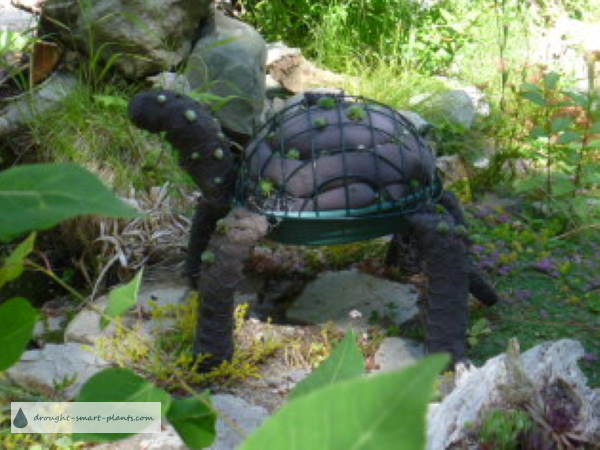An Amusing and Unique Garden Focal Point
A topiary turtle is a fun project for the more advanced succulent fanatic – don’t attempt this before you’re comfortable working with wire and the tools required. Two people are essential for the actual assembly of the topiary turtle.
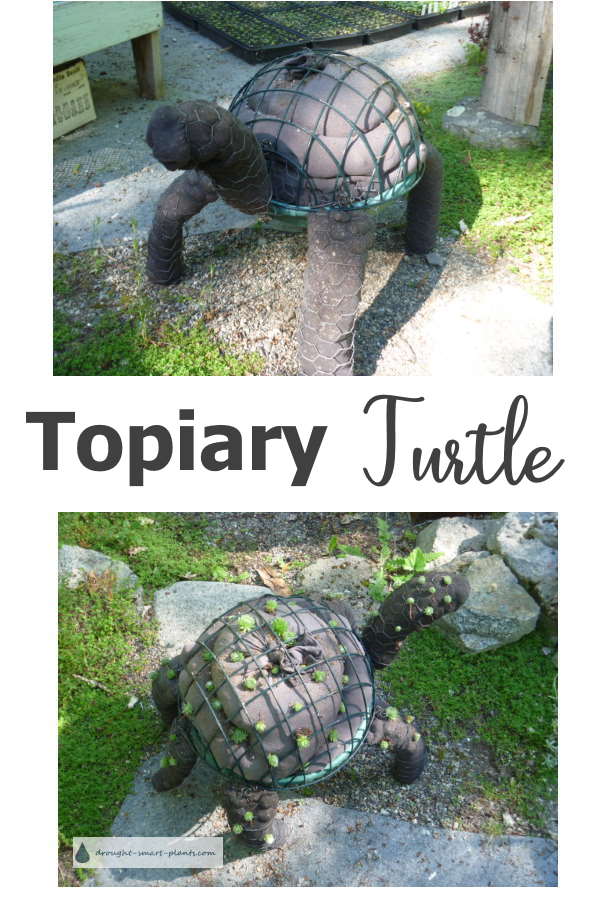
Here’s a list of the supplies you need to make your topiary turtle:
- Wire round bottomed basket such as a coir lined hanging basket;
- Large planter plate or saucer. This should be the same size or a little smaller than the basket, and either really shallow, or with some drain holes drilled into it – alternatively, a metal pan or even a piece of chicken wire or hardware cloth cut to fit;
- Chicken wire with small sized holes – 2.5cm (one inch);
- Tie wire – this is what’s used for concrete work and is pliable and easy to work with, and ages to a dark rusty brown, which is invisible in the finished succulent craft;
- Three pairs panty hose in a similar dark colour;
- Potting soil such as Sunshine Mix #4 or other fast draining mix;
- Sharp scissors or razor blade to cut the panty hose;
- Wire cutters (side cutters) and needle nosed pliers.
How to Make the Topiary Turtle
Cut four pieces of chicken wire 20cm (8″) square for the legs. Shape these into a tube and use the ends of the wire to fix the edges together.
Cut one piece of chicken wire slightly larger than the legs, about 20cmx30cm (8″ x 12″) for the neck and head. Shape in the same manner.
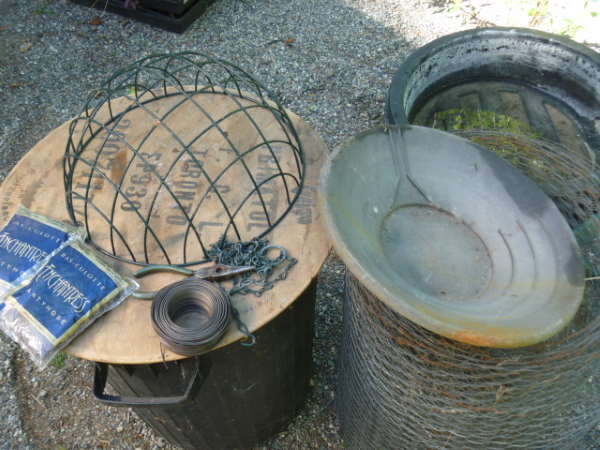
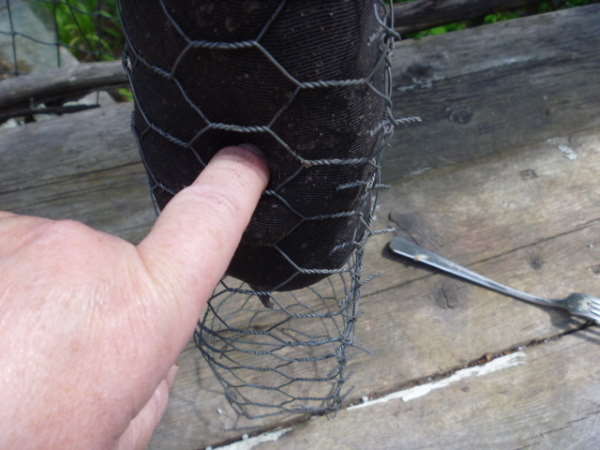
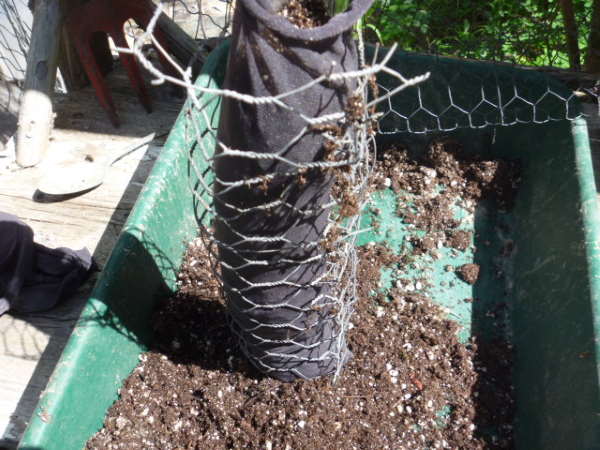
Cut one piece of chicken wire slightly smaller than the legs, about 20cmx15cm (8″ x 6″) for the tail. Make this shorter and more pointed by stepping on the end of it once it’s filled with the panty hose liner and potting soil.
Cut the panty hose into pieces to fill with soil inside the legs – the toe end of one pair about 30cm (1′) long for the front legs, then cut another set about 35cm (16″) long, tie the end and turn inside out for the back legs.
Cut the lower part of another pair of panty hose for the tail and the head.
Put a small amount of soil in the panty hose legs, and insert them carefully into the chicken wire tubes, being careful not to snag them on the sharp wire ends.
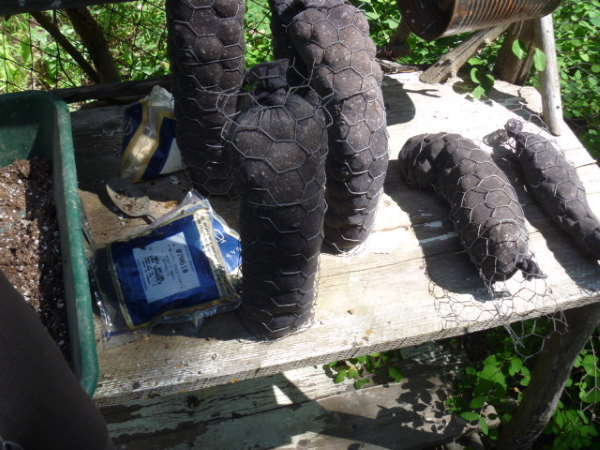
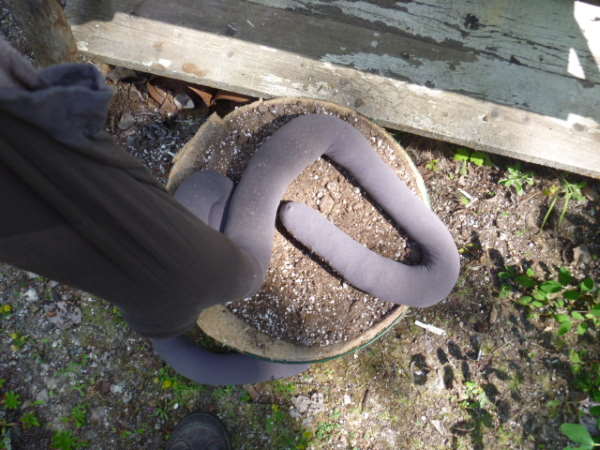
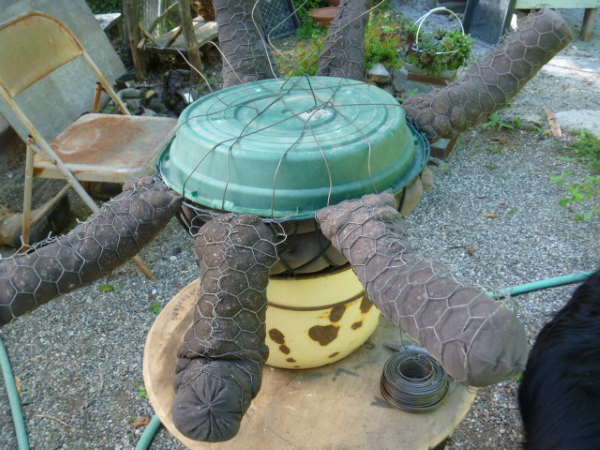
Fill with more soil to pack tightly against the chicken wire. Step on the ends to close them at the top.
The tail should be more pointed than the legs.
The head should be more tightly filled with soil.
Here’s the part where you need another set of hands.
With your helper, wire the legs, tail and head into place on the outside of the basket. Work with the basket upside down on a pot to hold it stable. Fill the third pair of panty hose with potting mix.
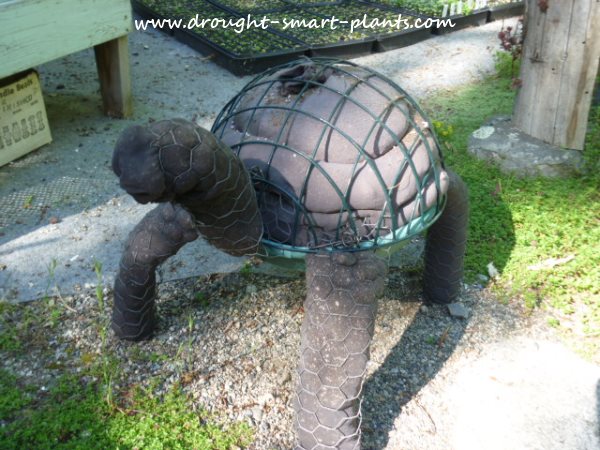
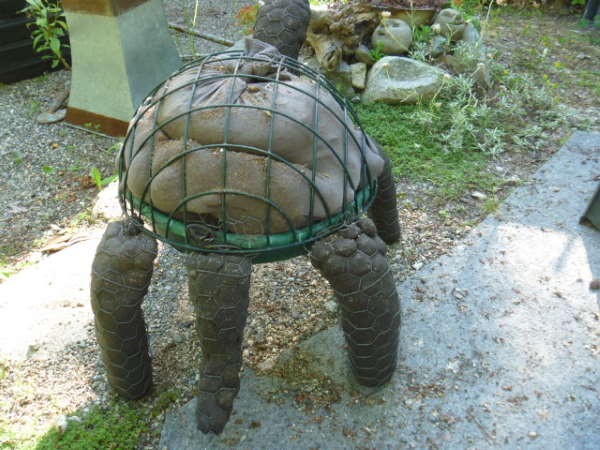
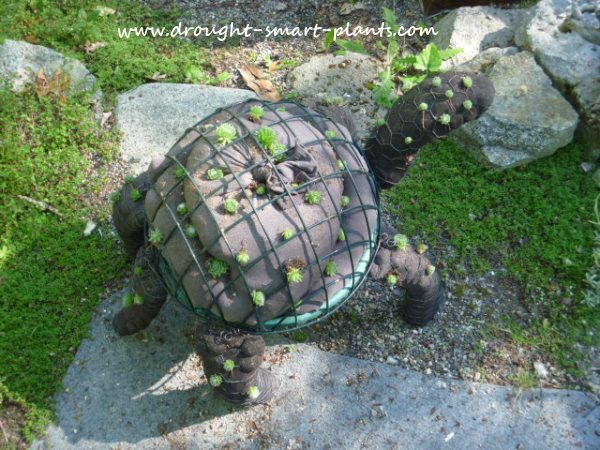
Hint: if the potting mix is dry it’s easier to fill the panty hose legs.
Once you have enough soil for the panty hose to coil around inside the basket filling it completely, place the plate or plant pot saucer holding all the limbs in place, making sure there is no sharp chicken wire sticking out.
Lace long pieces of tie wire across the bottom the turtle to hold the plate in place. Carefully turn the turtle topiary over, and plant with Sempervivum chicks, cut off the mother plants with a bit of stolon (the stem part) still attached.
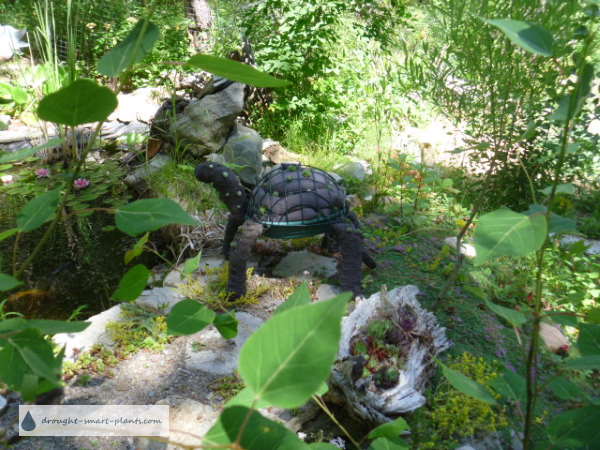
Push these into the coils of the panty hose, and between the chicken wire and the panty hose in the legs, head and tail. These will root through the panty hose, so there’s no need to make holes in it.
In a few months, the plants in your turtle topiary will be established and rooted. Fill in any gaps with more chicks; over time, the whole surface will be covered.
To over winter your topiary turtle, fill a box or garbage bag with leaves and close the whole thing up in that, making sure that snow won’t crush him.
In the spring, replace or refresh the Sempervivum, water and fertilize occasionally for a unique and very amusing garden focal point.
